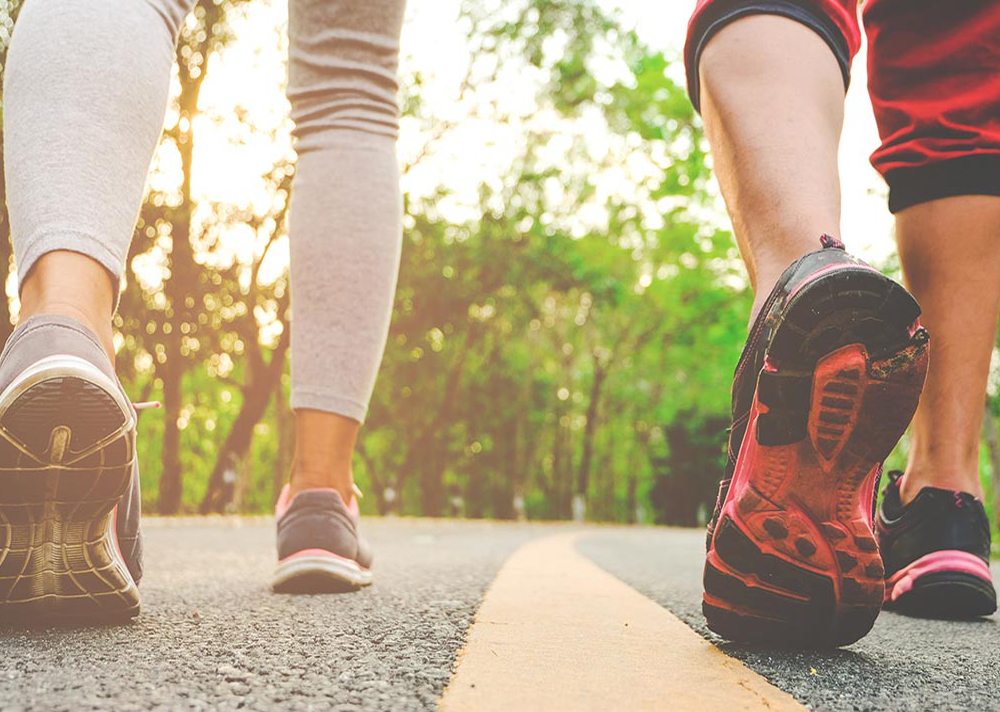
Regarding staying active, walking vs. running is debated based on cardiovascular benefits and calorie burn. However, one thing that should not be overlooked is the effect of these exercises on your joints. Whether you’re an experienced runner or just someone hoping to stay in shape in a low-impact way, learning biomechanics and the health ramifications for your knees, hips, and ankles is key.
In this guide, we will examine the upsides and downsides of both activities, offer expert guidance on joint-friendly workout strategies, and answer popular questions to help make working out alone or hitting the weights a more informed decision to safeguard your joints for life.
Higher impact forces are not necessarily evil. Bone density and cardiovascular fitness can get a more intense workout running than walking, but they can speed up aging in those prone to them.
Low-Impact Nature
|
Aspect |
Walking |
Running |
|
Joint Impact |
Low (1–1.5× body weight) |
High (2.5–3.5× body weight) |
|
Injury risk |
Reduced risk of overuse injuries |
Increased risk With Incorrect Form And Lack Of Progression |
|
Bone density benefits |
Minimal direct effect
|
Considerable stimulus on remodeling of bone |
|
Calorie Burn |
3.5 kcal/min (moderate pace)
|
7–12 kcal min−1 (speed dependent) |
|
Accessibility |
Very easy to use, requires little skill |
It needs to be used with caution and skill |
Of note: If your biggest concern is safeguarding sensitive joints, whether because of injury, arthritis, or simply advancing age, walking remains a safe, effective workout. If you’re healthy, biomechanically sound, and motivated for more of a bone-strengthening impact (or want improved cardio conditioning), running can be a great option if you take the proper precautions.
Invest in cushioned and supportive shoes. They have great arch support that will absorb the shock and help place your feet and body in alignment for walking and running.
These softer, grass or rubberized tracks have less impact than concrete or asphalt.
When running, apply the “10% rule:” Don’t add more than 10% of mileage or time each week to prevent overuse.
Strengthening the muscles around these focus joints, quads, hamstrings, glutes, etc., increases joint stability and reduces strain.
Flexibility Stretching and foam rolling regularly help you be more flexible and keep your joints moving smoothly.
Speak to doctors and other healthcare professionals so that your workout is suited to your joint health. Our orthopaedic experts at DHEE Hospitals evaluate the function of each joint and recommend tailored exercise programs to maximize fitness while protecting joint integrity.
Advice like that can help avert injuries, control chronic conditions like osteoarthritis, and help you get the most out of your walking or running regimen.
An example of an osteoarthritis-friendly training schedule for an 8-week program can be found here.
|
Week |
Monday |
Wednesday |
Friday |
Sunday |
|
1 |
30-min walk |
Rest |
30-min walk |
15-min walk + 10-min jog |
|
2 |
35-min walk |
Strength + mobility |
35-min walk |
20-min walk + 15-min jog |
|
3 |
40-min walk |
Rest |
40-min walk |
25-min walk + 20-min jog |
|
4 |
45-min walk + light jog |
Strength + mobility |
45-min walk |
30-min walk + 25-min jog |
It’s a slow way to adapt your joints, whether you are looking to move to the run phase or simply care for them through low-impact training.
Walking vs. Running can be either/or. Both types of activity have different health and joint benefits. “Walking is a low-impact, easy exercise to help joint lubrication and muscle strength, but running provides greater gains on bone density and cardiovascular benefits.” You can maintain an active lifestyle that maintains joint health well into your later years by listening to your body, sensible progression, and qualified help when necessary, like from DHEE Hospitals.
Running does place more impact on your joints (2.5–3.5 times body weight), which can wear down cartilage if performed in excess or with bad form. But when done with good pacing, good shoes, and some strength training, running doesn’t have to hurt joints. It can even help build up the bones and muscles around the joints, not break them down.
Yes. Those with mild osteoarthritis or an injury you’re recovering from will also benefit from added joint stability and less pain, thanks to the strength building in the muscles surrounding the joint and circulation of synovial fluid.
In the case of knee arthritis, walking is often prescribed as low-impact. Begin with brief, flat walks and build up slowly. If it is painful, try cycling or swimming instead—and get specific advice from an orthopaedic specialist.
Absolutely. The more force you exert on your bones while running, the more you activate bone-building cells (osteoblasts), a process that can fortify bones and stave off osteoporosis, benefits that running may provide more than walking.
Follow a gradual progression, don’t increase running duration by more than 10% per week, wear running shoes with a good amount of cushion, on softer running surfaces do some strength and mobility training, and take some rest days for recovery.